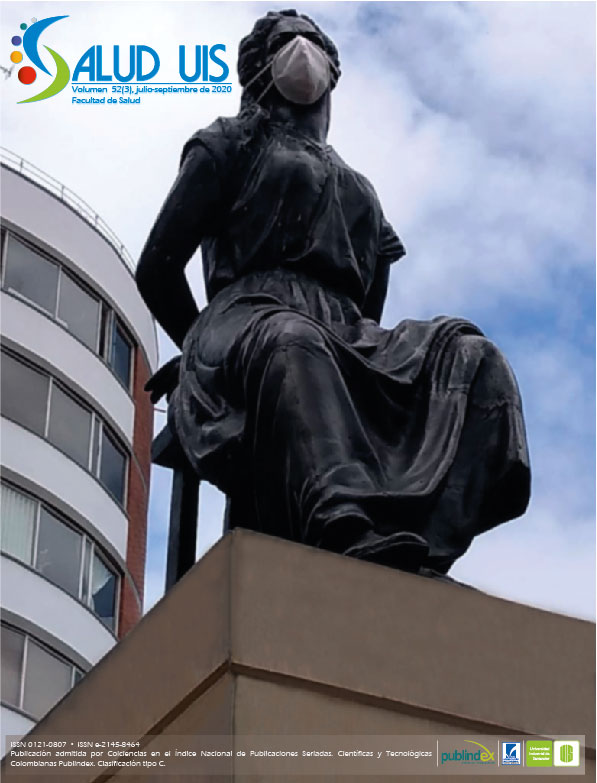Resumo
Uruguay is in South America. It has 3,286,314 inhabitants, 1.6% of which lacks comprehensive health insurance. Detected cases of COVID-19 represent 0.022% of the population, 2.6% of which has resulted in death. Mortality from this illness is 0.6% per 100,000 inhabitants, and health workers represent 14% of detected cases. The country is slowly coming out of intensified social distancing. This article reports on accumulated, recovered, and active cases. The authors also frame the causes of this zoonosis in terms of an environmental health problem, and thus a global health problem, requiring a “one health” approach. Human activity has changed natural habitats as a result of extraction activities, increased urbanization, growing populations, different cultural practices, and socio-economic conditions. This contributes to the emergence of zoonoses, particularly RNA viruses. If the cause of this phenomenon is not addressed, we will continue to face increasingly greater challenges.
Referências
2. World Health Organization, Health Topic, Country: Uruguay. 2016. https://www.who.int/countries/ury/es/
3. United Nations Development Program (UNDP), 2014. Rapport sur le développement humain 2014. http://hdr.undp.org/sites/default/files/hdr14-report-fr.pdf
4. National Institute of Statistic (INE, Spanish acronym). Boletín Técnico Actividad, Empleo y Desempleo, 2019. www.ine.gub.uy/documents/10181/30865/ECH+Empleo+Enero+2020/43ad8dd9-baff-4af8-8589-881
5. Central Bank of Uruguay (BCU, Spanish acronym). Estadísticas y Estudios. Nota Metodológica – Marzo 2020, 2020. https://www.bcu.gub.uy/Estadisticas-e-Indicadores/Paginas/Presentacion%20Cuentas%20Nacionales.aspx
6. National Ministery of Health (MSP, Spanish acronym) Informes. Informe Cobertura poblacional del SNIS según prestador 2018. https://www.gub.uy/ministerio-salud-publica/tematica/cobertura-poblacional
7. Instituto Pasteur de Montevideo. Udelar e IP Montevideo presentaron kit de diagnóstico COVID-19, 2020. http://pasteur.uy/novedades/udelar-e-ip-montevideo-presentaron-kit-de-diagnostico-covid-19/
8. Rabinowitz P, Conti L. Links among human health, animal health, and ecosystem health. Annu Rev Public Health. 2013; 34: 189-204. doi: 10.1146/annurev-publhealth-031912-114426.
9. Dennehy JJ. Evolutionary ecology of virus emergence. Ann. NY Acad Sci. 2017; 1389(1): 124-146. doi: 10.1111/nyas.13304
10. Estrada-Peña A, Ostfeld RS, Townsend Peterson A, Poulin R, de la Fuente J. Effects of environmental change on zoonotic disease risk: an ecological primer. Trends in Parasitol. 2014; 30(4): 205-214. doi: 10.1016/j.pt.2014.02.003
11. McMahon J, Morand S, Gray JS. Ecosystem change and zoonoses in the Anthropocene. Zoonoses Public Health. 2018; 65(7): 755-765. doi: 10.1111/zph.12489
12. Altieri M, Nicholls CI. La agroecología en tiempos del COVID-19. Consejo Latinoamericano de Ciencias Sociales (CLACSO). 2020. https://www.clacso.org/la-agroecologia-en-tiempos-del-covid-19/
13. Wallace R. Big farms make big flu: dispatches on influenza disease, agribusiness, and the nature of science. Monthly Review. NY, 2016.
14. Linares S, Di Nucci J,Velázquez G. Cambios en el sistema urbano. En: Velázques G, coordinador. Geografía y calidad de vida en Argentina. Un análisis regional y departamental 2010. Tandil. CIG-UNCPBA. 2016; 67-81.
15. Chanampa ME, Lorda MA. Informal settlements and urban regularization. Production of territorialities in tension. Bitácora Urbano Territorial. 2020; 30(1): 141-150. doi: http://dx.doi.org/10.15446/bitacora.v30n1.69896
16. Beuf A. Centralidad y policentralidad urbanas. Espiral Rev Geograf Ciencias Sociales. 2020; 1(2): 131-155.
17. Jones BA, Grace D, Kock R, Alonso S, Rushton J, Said MY, et al. Zoonosis emergence linked to agricultural intensification and environmental change. Proc Natl Acad Sci USA. 2013; 110(21): 8399-8404. doi: 10.1073/pnas.1208059110
18. Abdullahi IN, Emeribe AU, Mustapha JO, Fasogbon SA, Ofor IB, Opeyemi IS, et al. Exploring the genetics, ecology of SARS-CoV-2 and climatic factors as possible control strategies against COVID-19. Infez Med. 2020; Ahead of Print 28(2): 166-173.
19. Plowright RK, Eby P, Hudson PJ, Smith IL, Westcott D, Bryden WL, et al. Ecological dynamics of emerging bat virus spillover. Proc R Soc B. 2015. doi: http://dx.doi.org/10.1098/rspb.2014.2124
20. Gostic K, Gomez AC, Mummah RO, Kucharski AJ, Lloyd-Smith JO. Estimated effectiveness of symptom and risk screening to prevent the spread of COVID-19. Elife. 2020; 9: e55570. doi:10.7554/eLife.55570
21. Zhan M, Qin Y, Xue X, Zhu S. Death from Covid-19 of 23 Health Care Workers in China. N Engl J Med. 2020; 382(23): 2267-2268. doi: 10.1056/NEJMc2005696
Se autoriza la reproducción total o parcial de la obra para fines educativos, siempre y cuando se cite la fuente.
Esta obra está bajo una Licencia Creative Commons Atribución 4.0 Pública Internacional.

